The concept of sustainable, Tiny Home has long been a source of fascination for many. At CES 2025, this fascination was reignited as the event showcased an array of cutting-edge tiny homes designed to combine efficiency, sustainability, and style. These innovative living solutions, ranging from EV RVs to self-sustaining pods, offered a glimpse into a future where minimalism meets environmental consciousness. For anyone dreaming of an eco-friendly village or a personal retreat that minimizes ecological impact, the displays at CES 2025 were nothing short of inspiring.
The Appeal of Sustainable Tiny Living
Tiny homes have a unique allure. They promise a simpler lifestyle while addressing critical global challenges like housing shortages and environmental degradation. At CES 2025, this trend reached new heights with homes that incorporated advanced features like solar panels, atmospheric water generators, and high-grade insulation. These homes weren’t just practical—they were also aesthetically pleasing, designed with modern living in mind.
One standout aspect of these models was their ability to function off-grid. With efficient energy systems and water recycling technologies, they catered to those seeking independence from traditional utility grids. The fact that many of these homes could be set up without requiring permits further added to their appeal, particularly for individuals looking to utilize backyard spaces or create additional dwelling units.
While affordability remains a concern, some models demonstrated a surprising alignment with market expectations. With features that blend luxury and functionality, these homes showed that sustainable living doesn’t have to mean sacrificing comfort or convenience.
Haus.me Microhaus Pro: Compact Luxury on Demand
Among the many innovations at CES 2025, the Haus.me Microhaus Pro stood out as a favorite. This 120-square-foot pod offered a ready-to-use living solution that could be placed on almost any flat surface, whether grass, sand, or concrete. Equipped with cutting-edge technology, it included features like atmospheric water generation and a robust battery system capable of powering the unit for up to four days.

Inside, the Microhaus Pro maximized every inch of space with thoughtful design. A Murphy bed transformed into a dining area, while the kitchenette boasted essential appliances like a small fridge and microwave. The bathroom was outfitted with a full-sized shower, adding a touch of luxury to this compact home. With options for grid power or solar energy, it catered to a range of living scenarios.




The Pro model, priced at just under $90,000, came fully equipped for rental use, complete with smart home integration and high-end amenities. For personal use, the Lite version offered a more affordable alternative, proving that sustainable, stylish tiny homes are accessible to a broader audience.
AC Future Ai-THd: Transforming Tiny Living
For those seeking versatility, the AC Future Ai-THd brought an entirely new dimension to the tiny home trend. This EV RV was one of three models showcased, each designed to expand from 120 square feet to a spacious 400 square feet. The Ai-THu, a deliverable unit similar to the Microhaus, emerged as a particularly intriguing option.
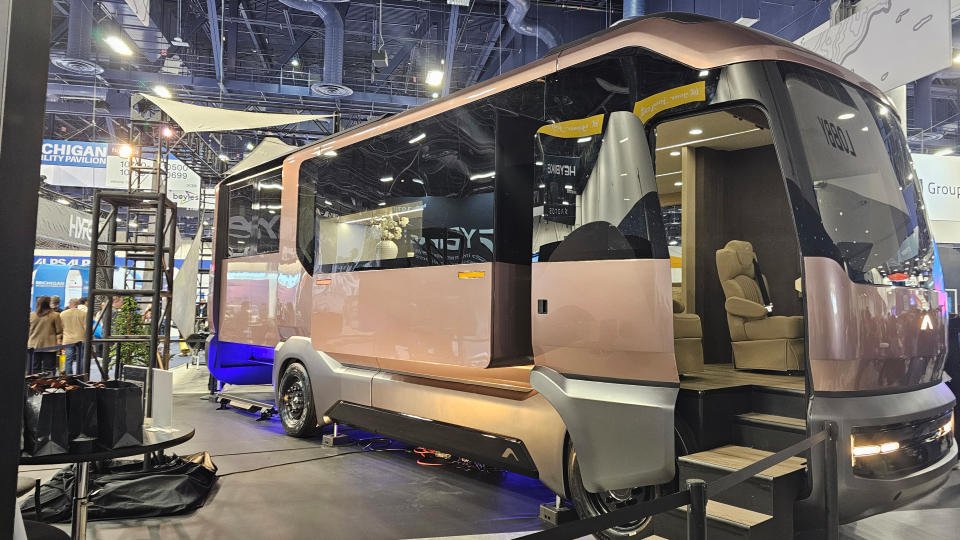
These homes were packed with innovative features, including solar panels that generated up to 25 kWh daily and atmospheric water generation capable of producing 15 gallons per day. Inside, they offered all the comforts of a full-sized apartment: a washer/dryer, dishwasher, and even a whole-home AI assistant named Futura. The ability to customize these units ensured they could meet a variety of needs, making them ideal for off-grid living or urban setups.

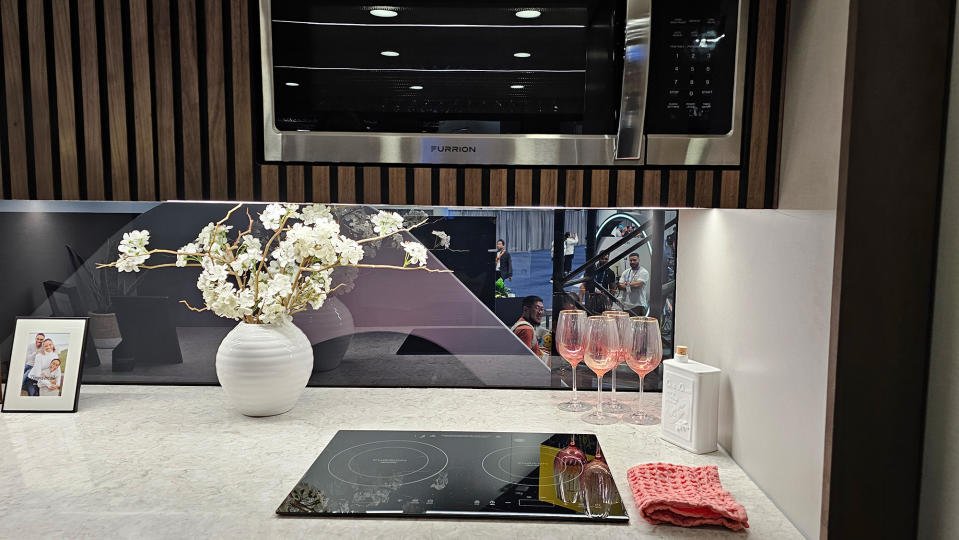
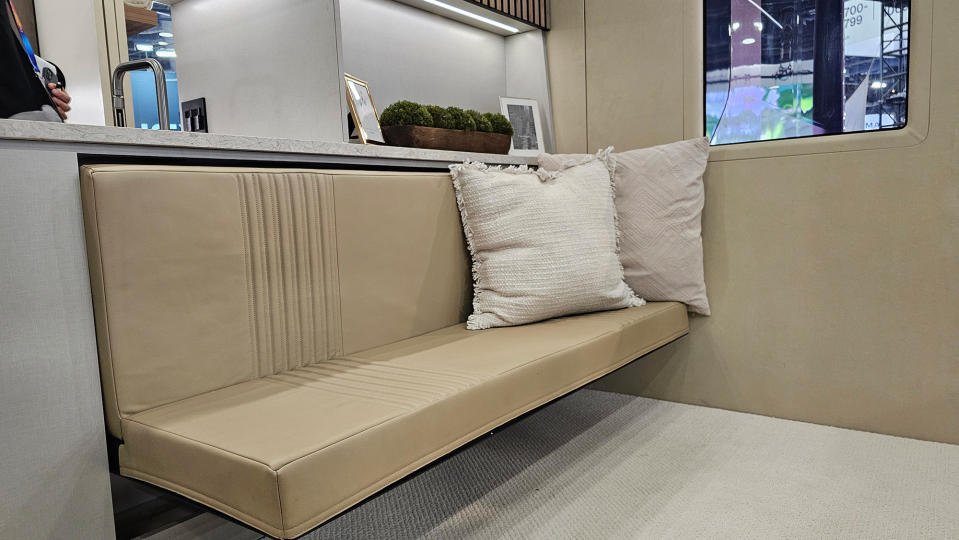
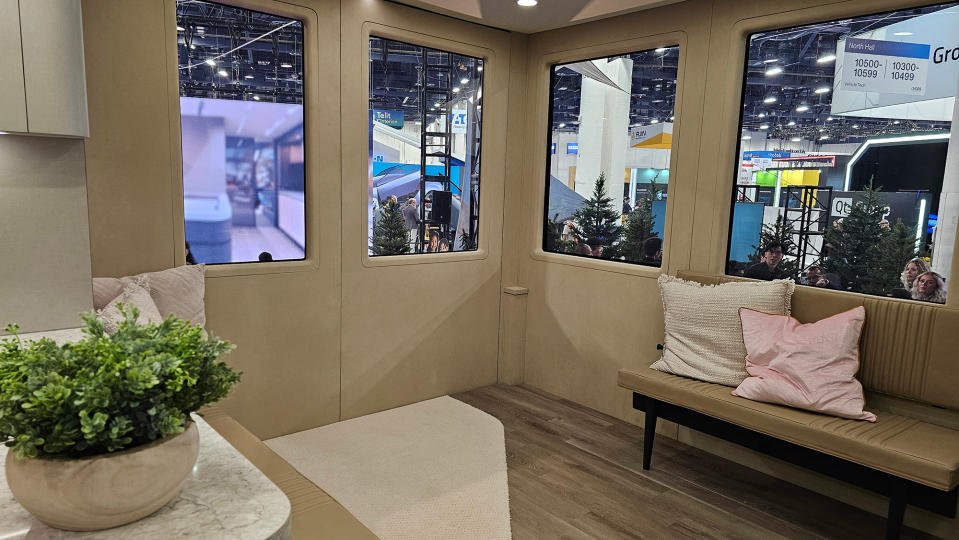

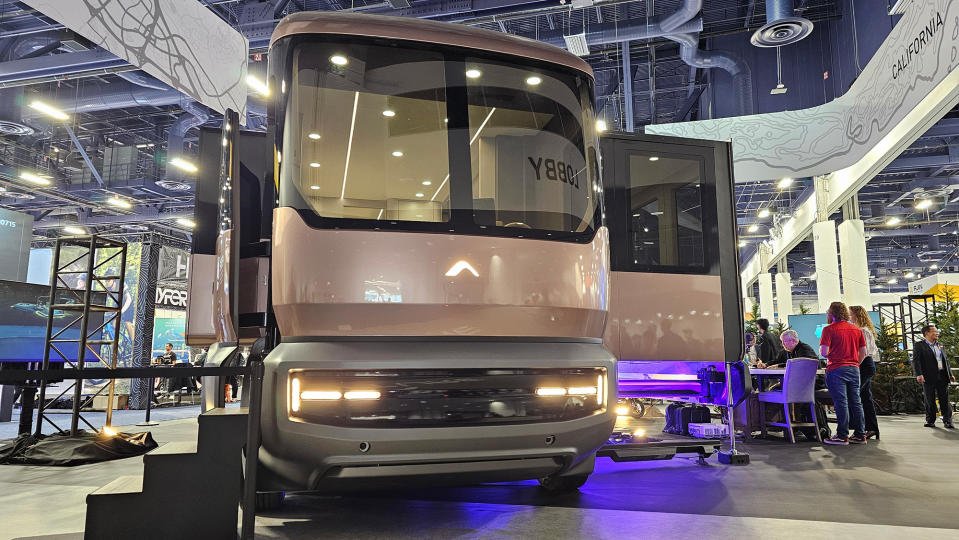
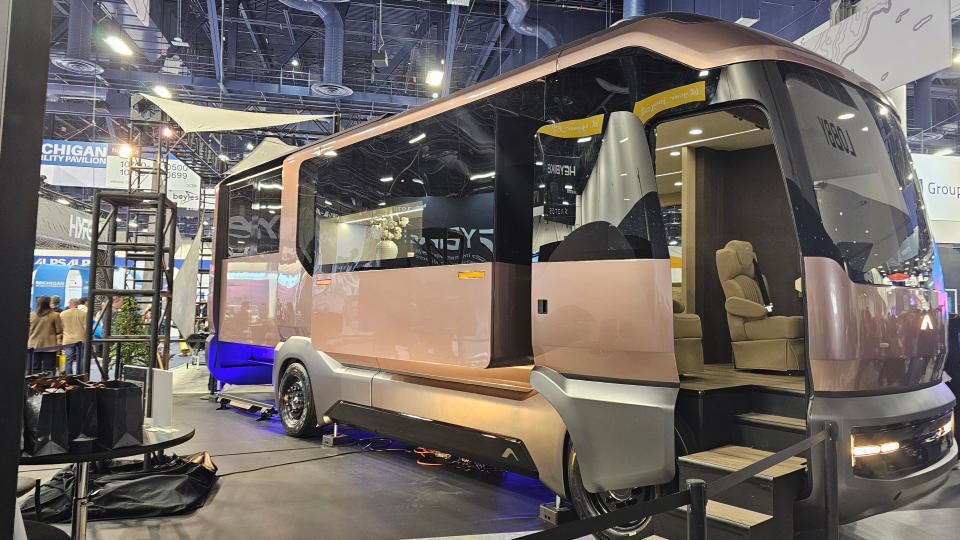
While production timelines are still underway, the AC Future models underscored the potential of tiny homes to redefine sustainable living. By integrating advanced technologies and adaptive designs, they demonstrated how compact living could be both functional and futuristic.
RollAway: Hotel-Like Comfort on the Move
The RollAway EV RV brought a touch of luxury to the tiny home scene. This rentable RV combined the amenities of a high-end hotel with the convenience of sustainable travel. With a queen-sized bed, dual-burner stovetop, shower, and panoramic roof, it offered a comfortable space for both short trips and extended stays.



Sustainability was at the forefront of its design, featuring rooftop solar panels, a waterless toilet, and low-waste water systems. These elements allowed for off-grid adventures without compromising on comfort. To enhance the travel experience, a 24/7 concierge service provided trip planning and on-road assistance, ensuring every journey was seamless.
Although reservations were limited to the San Francisco Bay area for 2025, the RollAway showcased how tiny living spaces could combine practicality with indulgence. Its nightly rate of $400 made it a premium option, but the unique blend of features justified the cost for many.
Pebble Flow: Streamlined Efficiency for Modern Living
The Pebble Flow electric trailer highlighted the importance of user feedback in refining tiny home designs. Building on last year’s prototype, the production model introduced meaningful upgrades, including additional windows and a more aerodynamic shape. These changes not only improved aesthetics but also enhanced functionality, making the trailer easier to tow.

Inside, the Pebble Flow offered a versatile layout with a Murphy bed that doubled as a workspace. The dinette area converted into additional sleeping space, accommodating up to four people. With features like a 45 kWh battery, a 1.1 kW solar array, and a shower with switchable glass doors, it balanced sustainability with modern conveniences.




Starting at $109,500, the Pebble Flow was an investment in eco-friendly living. For those willing to pay a premium, the motorized version added advanced capabilities like remote-controlled parking, making it a compelling choice for tech-savvy adventurers.
Lightship AE.1 Cosmos: Compact Innovation Meets Sustainability
Colorado-based Lightship brought a unique perspective to CES 2025 with the AE.1 Cosmos electric trailer. This model prioritized efficiency, featuring a collapsible design that reduced drag during transport. Its motor-assist system further lightened the load on towing vehicles, demonstrating a commitment to sustainable innovation.

The Cosmos’s interior was thoughtfully designed, with a full kitchen, two convertible sleeping areas, and ample storage. A 1.8 kWh solar array and robust battery system powered all its features, ensuring reliable off-grid performance. The immersive display at CES, complete with desert-inspired décor, emphasized the trailer’s potential to bring luxury to remote settings.



With a limited production run of just 50 units, each priced at $250,000, the Cosmos was a premium offering. However, its advanced technology and high-quality craftsmanship positioned it as a standout in the sustainable tiny home market.
Tiny Homes as a Solution to Housing Challenges
Beyond their appeal to individual buyers, tiny homes have the potential to address broader societal issues. As cities relax zoning laws and permit requirements for additional dwelling units (ADUs), these compact homes could provide affordable housing solutions for students, aging relatives, or single individuals. Their adaptability and sustainability make them a valuable tool in tackling housing shortages.
Moreover, the innovations showcased at CES 2025 underscored the role of technology in creating efficient, livable spaces. From atmospheric water generation to AI-powered home assistants, these features highlighted how tiny homes could seamlessly integrate into modern lifestyles while reducing environmental impact.
A Future Shaped by Tiny Living
The sustainable tiny home trend at CES 2025 reignited dreams of creating eco-friendly communities. These innovative designs proved that living small doesn’t mean compromising on comfort or functionality. Whether for personal use, rental purposes, or as part of a larger movement toward sustainability, these homes offered a glimpse into a promising future.
As the world continues to grapple with housing and environmental challenges, the solutions presented at CES 2025 serve as a beacon of hope. They remind us that with creativity and innovation, it’s possible to build a better, more sustainable world—one tiny home at a time.






